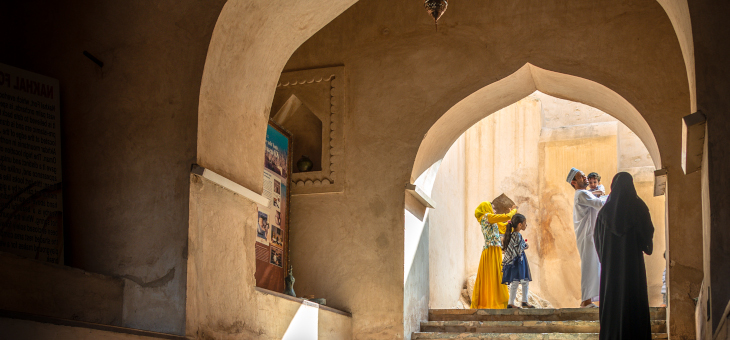Oman: A stable political situation but a worrying build-up of debt

Stable political situation
Oman – an absolute monarchy – is currently ruled by Sultan Qaboos bin Said al Said. The sultan rules largely by royal decree and, besides being the Head of State, he is also the Head of the Government, the Minister of Foreign Affairs and the Minister of Defence. Meanwhile, the Omani parliament has a solely consultative role. The 79-year-old sultan came to power in 1970 by overthrowing his father and since then he has set the country on a strong path towards development. However, he has been ill for a long time and rarely appears in public.
While Sultan Qaboos enjoys strong popular support, the country has not been immune to protests, which erupted during the years of the Arab Spring. These were managed by increasing economic handouts and initiating a constitutional reform programme. In recent years, protests have also erupted, aimed at the modest fiscal consolidation efforts of the government, and to voice discontent over social factors such as the stubbornly high unemployment rate. The government has again responded through economic handouts, reversing part of the reforms and implementing some quick government reshuffles. However, overall, the political situation has remained stable.
The health of the Sultan is a source of uncertainty given that he has been relatively absent from public life and his eventual succession is an issue that is still up in the air for the country due to the central role he plays. A possible succession would firstly involve a meeting of the family council and, subsequently, if there was no agreement over a successor, the opening of a sealed letter written by Qaboos which would contain the names of two people in order of preference. However, it has recently emerged that Sayyid Asaad bin Tariq al Saeed, Qaboos’s cousin, seems to be lined up as a potential successor. Sayyid was named Deputy Prime Minister for Relations and International Cooperation and has been a personal representative of the Sultan since 2002.
A neutral stance in regional conflicts
In international affairs, Oman has always tried to remain neutral and to play a mediator role in conflicts. It was the only Gulf country that did not participate in the Saudi-led coalition in Yemen, which meant that the country avoided being drawn into a war that has been very costly and bloody. Instead, Oman has tried to mediate between the different factions in Yemen. The country also has historically good ties with Iran, unlike other GCC countries (except Qatar). This has enabled it to serve as a back channel during the negotiations on the Iranian nuclear agreement and the country has hosted talks between the Iranian and US governments.
Struggling with the reality of lower oil prices
The central issue currently impacting the Omani economy is that five years after the oil price collapsed in 2014, it has still not adapted to this shock, given the absence of any significant policy reforms. As a result, Credendo has already downgraded the medium-term political risk rating three times since 2015. The country has maintained a significant twin deficit since 2015, which has been funded through excessive external borrowing. The public deficit peaked at 21.3% of GDP in 2016, and while this may have narrowed, it still averaged a staggering 14.8% of GDP in the years 2015–2018. The current account deficit also peaked in 2016, when it reached 19.1% of GDP, but in the years 2015–2018 it still averaged 14%, which is high.

In order to fund both deficits the country has borrowed extensively and mainly externally. In 2014, Oman’s public debt level was only 4.9% of GDP; by the end of 2018 this rose to 53.4%. When we look at the total external debt evolution over the same period, the situation is even bleaker. Where external debt originally stood at 35.4% of GDP, it rose to 94% of GDP in 2018. Currently, the IMF projects the public and external debt levels to continue to increase, to 63.9% of GDP and 112.4% of GDP in 2020, respectively. The increased external debt level has thereby also led to an increase in the external debt service. Elsewhere, we can also see that the short-term debt level rose from around 7% of total current account receipts at the end of 2014 to more than 30% by June 2019. Nevertheless, gross foreign exchange reserves have so far remained stable at around 4.5 months of import coverage.

The large current account deficits, combined with the increased short-term debt and rise in external debt service, has decreased the liquidity position of Oman. Credendo therefore decided to downgrade the short-term political risk classification of Oman from category 2 to category 3 in November 2019. However, no change in the medium- to long-term political risk classification is currently envisaged. Yet, given the rise in external debt levels, the current classification is clearly under pressure.
Analyst: Jan-Pieter Laleman– jp.laleman@credendo.com